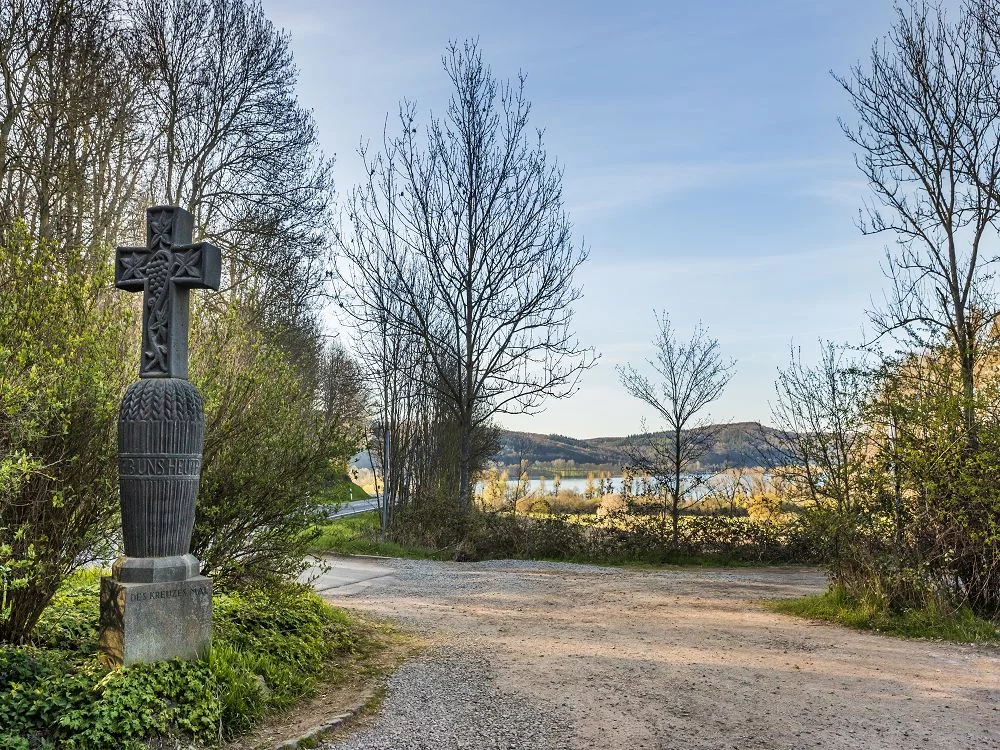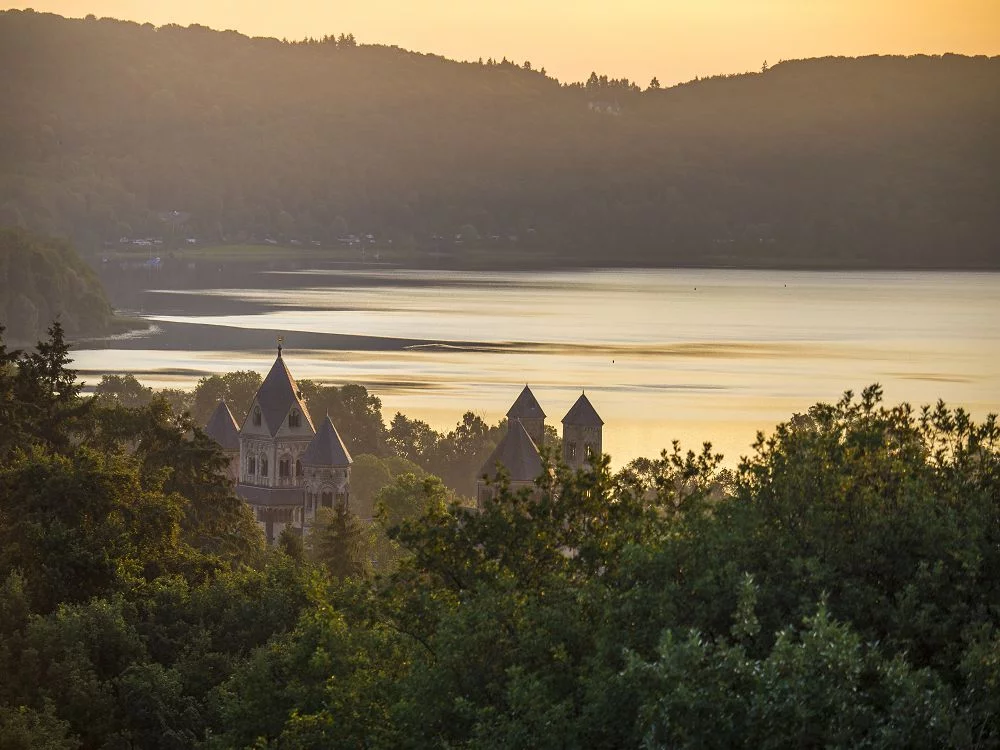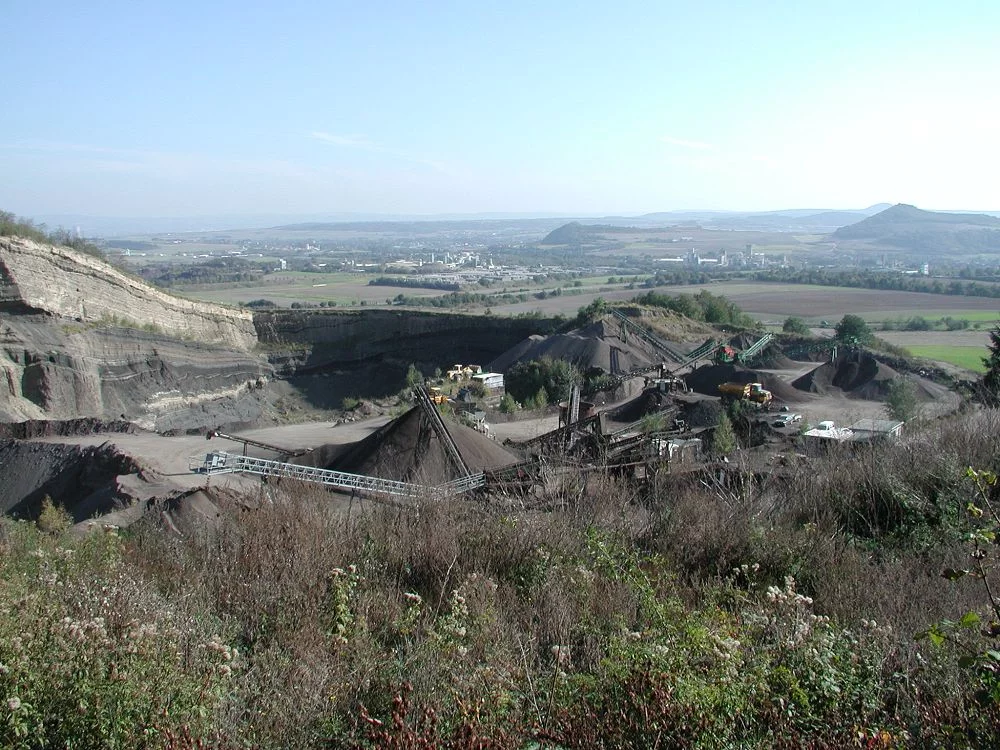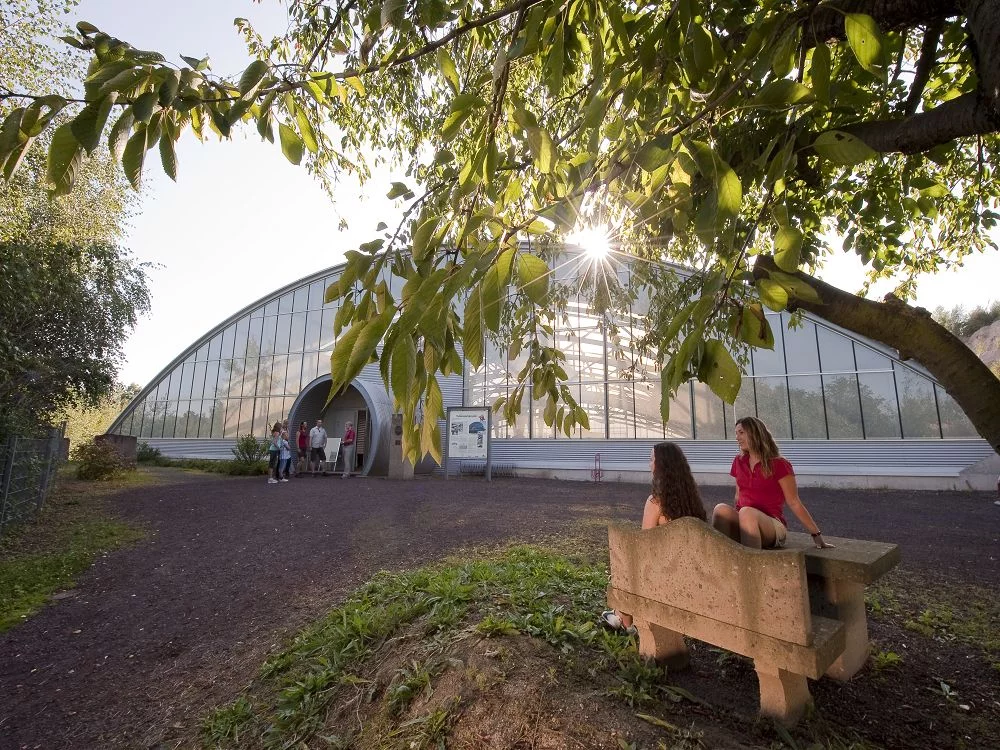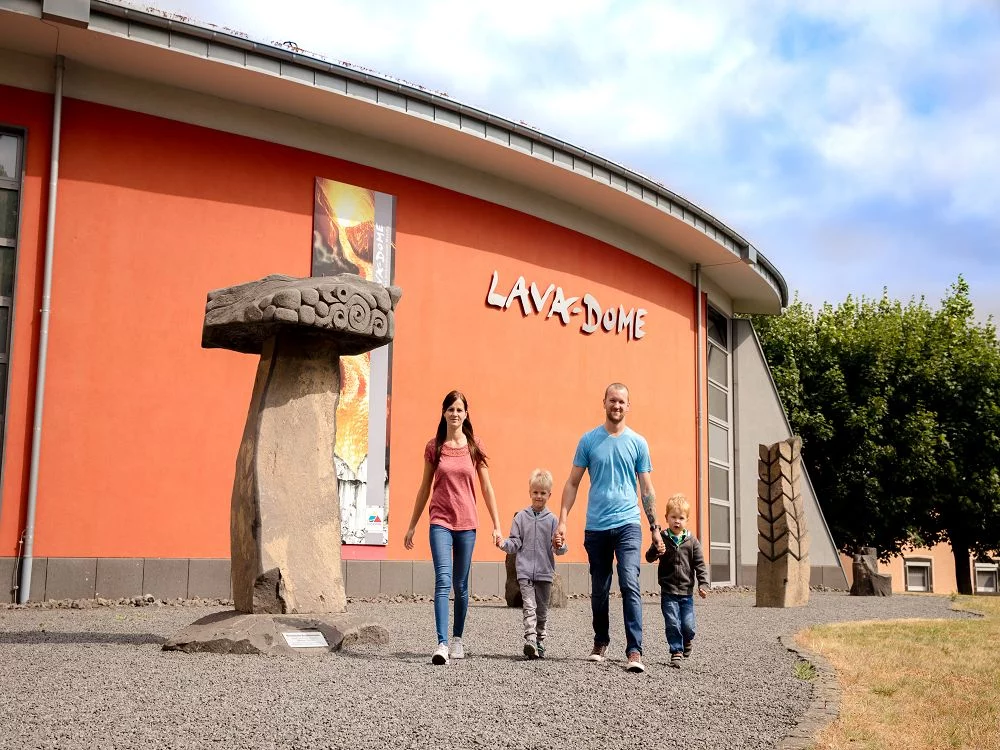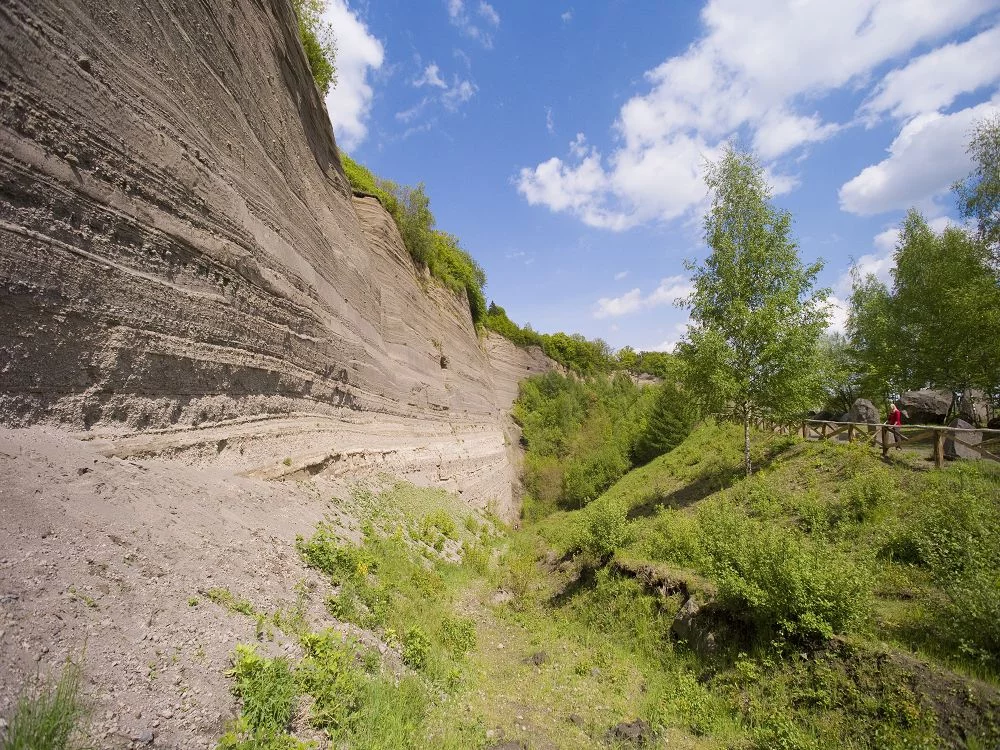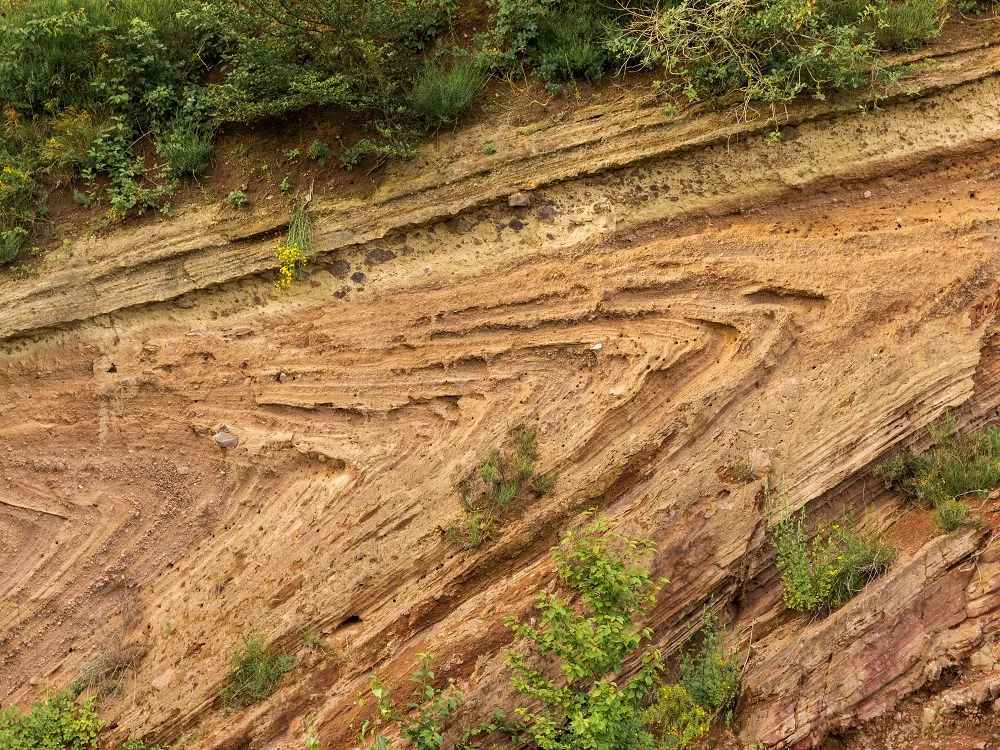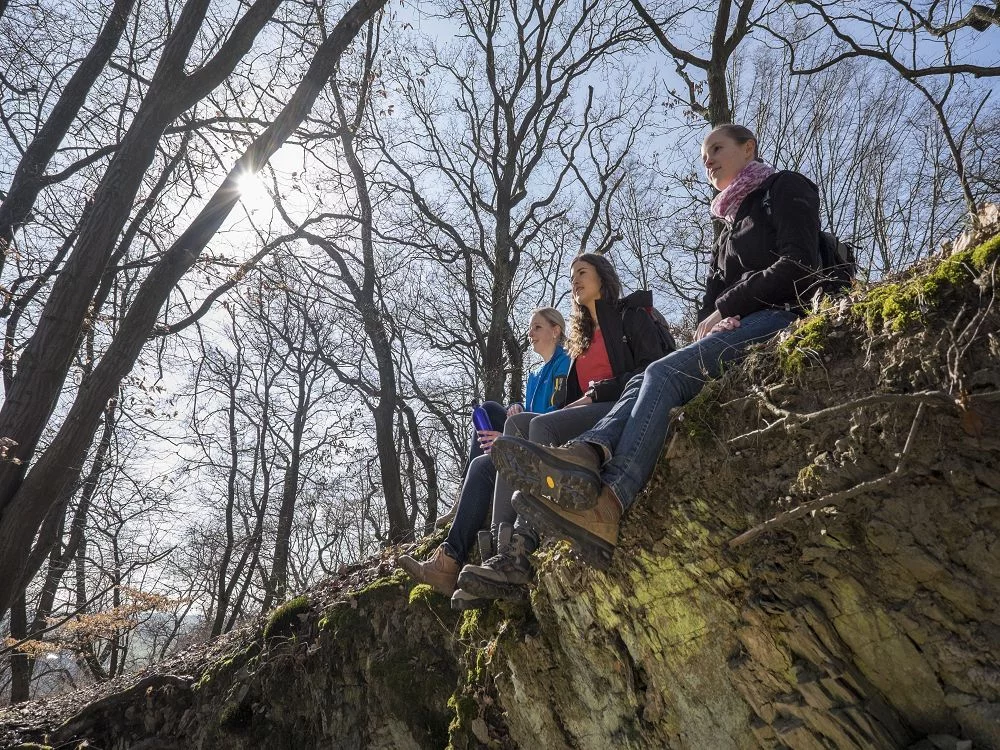When building the important Maria Laach Abbey Church, mainly volcanic rock from the surrounding area was used, whereby the differences in color were deliberately used to break up the wall surfaces.
Anyone who sees the impressive landscape of the lake basin with its tree-covered chain of hills today can hardly imagine that the Laacher See volcano erupted right here almost 13,000 years ago, throwing more material into the air than Vesuvius (79 AD) or Mt. St. Helens (1980) and covering large parts of the surrounding area in meters of ash.
Now solidified into rock, this ash, in the form of so-called tuff, is now the main building material for the monastery buildings and the imposing abbey church, which is considered a prime example of German Romanesque architecture. In addition to the reddish, variegated or yellowish tuff, black and dark porous basalt lava from the Eifel region was also used to structure the land surfaces for the plinths, cornices and walls.
The original plan was to use reddish red sandstone, but later, for cost reasons, basalt lava from Mayen or Mendig was used, which was easier to obtain.

